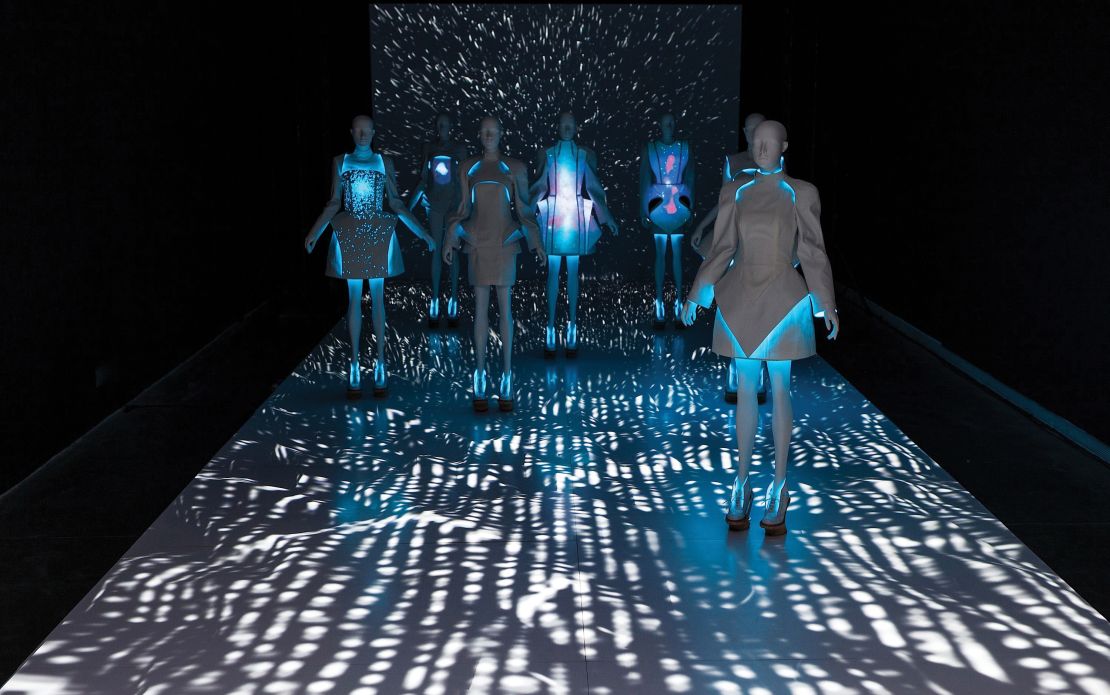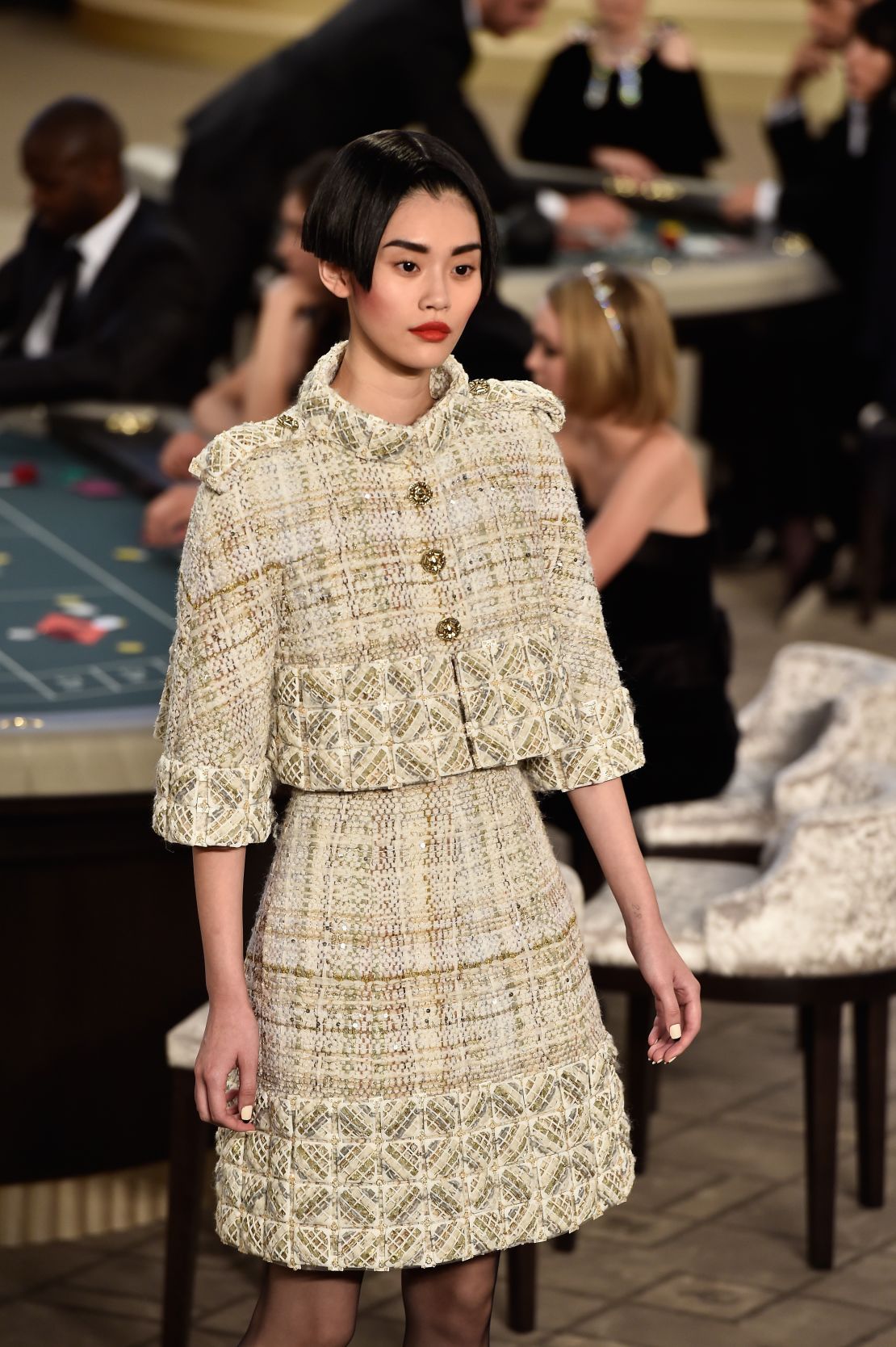Editor’s Note: Theo-Mass Lexileictous works at the intersection of fashion and media. His ventures include features in Dazed & Confused, ARTE TV, and FLAUNT, and collaborations with pop stars and fashion brands. The views expressed in this commentary are solely those of the writer. This is an edited excerpt from a new book called Otherworldly published by Gestalten.
Story highlights
Technology has presented designers with opportunities for innovation
Designers are experimenting with 3D printing and responsive wearables
In 2015, Chanel debuted an haute couture suit that was 3D printed
In the future, designers could sell blueprints directly to the user
Technology is creating new ways to do and make and even dream, ushering in a whole new era for the fashion world. Designs that in the past would have been difficult to imagine, let alone realize, are now just a click away from production. And the choices, not only of materials themselves but also of the ways they can be used and combined, are infinite.
And yet, even though the range of high-tech design methods is expanding and the use of technology is becoming more prevalent, designers have not always been able to see the true potential available to them.
Technological advances have clearly influenced a number of designers in the past – the evidence is there in their collections and fashion shows.
In the early years, though, these designers used technology principally as a means of creating spectacular effects on the runway rather than applying it to the garments themselves. It is only now that we are finally seeing it used to make an impact in the real world.
Early innovators
Hussein Chalayan was one of the first to do so, experimenting with wearable technology in complex shapes and forms. Chalayan’s work focuses on more than just functionality—it also pushes boundaries and challenges preconceived notions related to the general definition of clothing.
For instance, for Chalayan’s “Morphing Dress” Spring-Summer 2007 collection, he integrated microcontrollers into a series of garments that transformed as the models walked down the runway: their dresses rose, shrank, shifted, and changed color.

More recently, Beijing-based fashion designer Vega Zaishi Wang created a collection using electroluminescent fabric. Deriving her inspiration from the universe, her “Alpha Lyrae” special collection was a visual spectacle that transcended traditional approaches to realizing fashion designs.
“I originally wanted to print patterns of the nebula directly onto the fabric, but then I realized that the best way to combine light and cloth was to use a material with a clean white surface and to combine that with electroluminescent material that has a futuristic blue glow on it,” said Wang.
From the runway to reality
While Chalayan’s and Wang’s collections are clear examples of technology and fashion interacting to create something new, they are still confined to the runway. A bridge needs to be built between high fashion and everyday life.
New designers are rising to meet these new needs. Studio XO is a London-based fashion/technology company operating at the intersection of science, technology, fashion, and music. They have created pieces for a number of pop stars and celebrities, mainly for their performances, and have developed advanced technologies to be applied to each of their creations.
Their creations include a flying hovercraft dress for Lady Gaga, a digital mermaid bra designed for Azealia Banks, which features crystals that sparkle in real-time to match the rhythm of her rapping, and Bubelle, a dress that senses the wearer’s mood and changes color to match.
Technology has thus made an impact on the runway and on pop culture, helping to spread new concepts and approaches. High tech fabrics, robotics, and kinetic dresses on the catwalk or in music videos have allowed technology and fashion to coexist in a kind of equilibrium.
A luxury revolution
Luxury brand customers are fascinated by the concept of made-to-order garments and the unimaginable time and expense required to produce a handmade leather handbag or piece of jewelry. But what happens in the event one of those brands begins producing its goods with a 3D printer?
Karl Lagerfeld has been experimenting with 3D printing for some time now. At Chanel’s fall 2015 haute couture show, some of the brand’s popular tweed pieces were created using a 3D printer.
With brands like Chanel supporting such technologies, it will be extremely interesting to see what luxury brands in general do in response. The result may be a whole new conception of how one perceives and comprehends luxury.

By 3D-printing Chanel’s iconic jacket, Lagerfeld used technology to transform a twentieth century signature piece into a 21st century statement: fashion moves forward. Since the fashion industry is continuously changing, evolving, and adapting to its environment, one can expect that 3D printing and other new technologies will eventually be embraced by such iconic brands.
Haute couture at home?
As abstract as it may have sounded in the past, the rapid development of technology will soon promote autonomy, offering us the possibility to design and 3D-print our own personalized accessories and clothes at home. Designers will soon be selling ready-to-print blueprints directly to the user. And while 3D printing has not yet entered the average home, it is certainly on its way to affordability.
Just as industrialization and modernization once blurred the line between handcrafted and machine-made products, technology is sure to hold even more in store for fashion in the very near future.
Although the future of the fashion industry remains hard to predict, we can undoubtedly say that its complexity will increase.
In this new and complex era defined by perpetual change, fashion moves forward, reinventing and revolutionizing the human body. An intimate interaction between robotics, craftsmanship, and the human touch will soon be within our grasp.
The above text is an edited excerpt from a new book called Otherworldly published by Gestalten.









